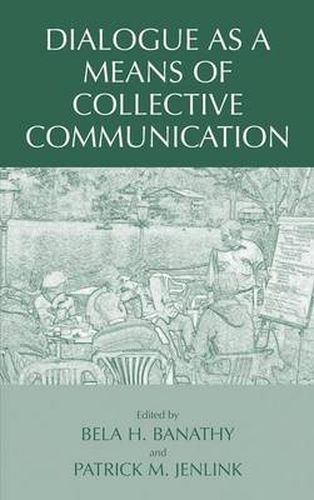Readings Newsletter
Become a Readings Member to make your shopping experience even easier.
Sign in or sign up for free!
You’re not far away from qualifying for FREE standard shipping within Australia
You’ve qualified for FREE standard shipping within Australia
The cart is loading…






This title is printed to order. This book may have been self-published. If so, we cannot guarantee the quality of the content. In the main most books will have gone through the editing process however some may not. We therefore suggest that you be aware of this before ordering this book. If in doubt check either the author or publisher’s details as we are unable to accept any returns unless they are faulty. Please contact us if you have any questions.
Dialogue as a Means of Collective Communication offers a cross-disciplinary approach to examining dialogue as a communicative medium. Presented in five parts, the book takes the reader on a journey of exploring the power and potential of dialogue as a means for communication. In particular, this volume comes at a time when the global society’s attention has been directed to creating more productive conversations in the name of world peace and harmony. It provides a unique new work on dialogue that brings the reader into a dialogue with dialogue , offering an opportunity to understand the communicative potential of dialogue. In the book, readers are introduced to five sections: Section I examines the historical and cultural perspectives of conversation. This examination helps to create a foundation for a deeper study of the emergent and salient aspects of conversation as it relates to cultural creativity and human systems design. Sections II offers the reader an examination of dialogue through different philosophical and theoretical perspectives as well as methodological ideas related to conversation. Section III explores different modalities of conversation and the application of design conversation within and across various types of design settings and human experiences. Section IV examines the field of practice as related to use of different forms of conversation. Here various authors will share their different approaches to conversation and their reflections and insights in using conversation in a variety of settings. Concluding the book, Section V reflectively examines the authors’ contributions to the book and provides the reader with a focus on the future.
$9.00 standard shipping within Australia
FREE standard shipping within Australia for orders over $100.00
Express & International shipping calculated at checkout
This title is printed to order. This book may have been self-published. If so, we cannot guarantee the quality of the content. In the main most books will have gone through the editing process however some may not. We therefore suggest that you be aware of this before ordering this book. If in doubt check either the author or publisher’s details as we are unable to accept any returns unless they are faulty. Please contact us if you have any questions.
Dialogue as a Means of Collective Communication offers a cross-disciplinary approach to examining dialogue as a communicative medium. Presented in five parts, the book takes the reader on a journey of exploring the power and potential of dialogue as a means for communication. In particular, this volume comes at a time when the global society’s attention has been directed to creating more productive conversations in the name of world peace and harmony. It provides a unique new work on dialogue that brings the reader into a dialogue with dialogue , offering an opportunity to understand the communicative potential of dialogue. In the book, readers are introduced to five sections: Section I examines the historical and cultural perspectives of conversation. This examination helps to create a foundation for a deeper study of the emergent and salient aspects of conversation as it relates to cultural creativity and human systems design. Sections II offers the reader an examination of dialogue through different philosophical and theoretical perspectives as well as methodological ideas related to conversation. Section III explores different modalities of conversation and the application of design conversation within and across various types of design settings and human experiences. Section IV examines the field of practice as related to use of different forms of conversation. Here various authors will share their different approaches to conversation and their reflections and insights in using conversation in a variety of settings. Concluding the book, Section V reflectively examines the authors’ contributions to the book and provides the reader with a focus on the future.